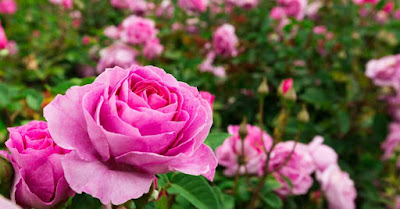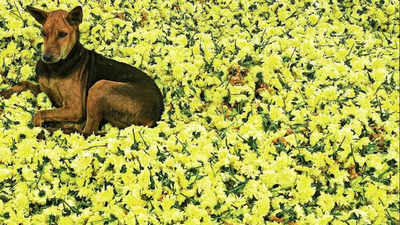14 Unique Flowers for Your Garden
14 Unique Flowers for Your Garden
There
are many plants that boast floral beauty, but to qualify as having unique flowers, a plant must go beyond the call of
duty: Its blooms must be unusual in one way or another. In some
cases, it will have bicolored flowers; in others, the blooms will be unusually
large or oddly shaped. Growing these plants is a wonderful way to set yourself
apart from your neighbors.
01of 14
Bird of paradise isn't only bicolored,
but also uniquely shaped. A tropical plant indigenous to South Africa, Strelitzia
reginae grows in the jungle, where it can enjoy hot and humid
conditions.
It's perennial only
in USDA plant hardiness zones 9 to 11, so
Northerners will have to grow it as an annual. It becomes five feet tall in
the wild and sports leaves like those on banana trees. Grow it in full sun to partial shade in rich soil. It's one of
the plants that like acidic
02of 14
oppies (Meconopsis grandis) dazzle with blue umbrellas that shelter fuzzy, yellow centers. The plants stand 24 to 36 inches tall; the sky-blue flowers measure four to five inches across.
Grow them in zones 5
to 7 in dappled shade and in-ground that drains well but that you can keep
evenly moist.
But these aren't easy plants to grow. They'll remind you
of Goldilocks both in terms of moisture and temperature needs:
They want a little bit of
moisture around their roots all of the time but not too much at any time.
They want summers that
aren't too hot but winters that aren't too cold.
03of 14
Crown Imperial
Orange
crown imperial (Fritillaria imperialis Rubra) is a spring bulb plant that
stands three to four feet tall. The flowers stink, but don't hold that against
them: They are the most unique and most beautiful of the spring bulb flowers.
Multiple orange,
bell-shaped blooms form the "crown" atop the plant stalk. Adding
further uniqueness are the six shiny, circular, bright-white dots
underneath each nodding flower.
Suited to zones 5 to 8,
crown imperial should be placed in full sun and well-drained soil.
04of 14
Secret
Lust Coneflower
05of 14
Pitcher Plant
Everyone
knows the carnivorous Venus fly trap, but Northern pitcher plants (Sarracenia purpurea subsp. purpurea)
are carnivores native to colder climates. They are fun plants
to grow because you'll be fascinated by the
way the flower starts as a tight ball, then unfurls as it develops. The
namesake "pitchers" are modified leaves that will also charm
gardeners.
Other
genera have even more unique pitchers, such as tropical pitcher plants (Nepenthes),
which produce pitchers that look like the powder horns carried by American
pioneers.
Northern
pitcher plants grow to be 20 inches tall. Grown in zones 3 to 7, they like full
sun and lots of water.
06of 14
Sundew
The unique
"flower" of another carnivorous plant, sundew (Drosera), is a faux
flower. Insects are tricked into thinking it's a real flower by the namesake
dewdrops that glisten on its tiny stalks: They look like drops of nectar to
unsuspecting insects. But when the insects land on them, they become trapped
because these drops are quite sticky.
You too may be tricked
into thinking they're flowers, so exquisite is their beauty. But, unlike
with insects, the illusion will cause you no harm. Sundew comes in many
species. D. intermedia can be grown in just about any
zone. Since they like boggy conditions, they're good plants for wet areas.
07of 14
Red Hot Poker Plant
Red hot poker plants (Kniphofia)
are so-called because of their cylindrical shape and the "hot" color
of their flower spikes. Many types have bicolored flowers. The species
plant, Kniphofia uvaria, is another South African native; it can
reach four feet high.
However, cultivars like
Pineapple Popsicle (yellow), Mango Popsicle (orange), and Redhot
Popsicle (red) stay shorter (two feet).
Grow these unique flowers
in zones 6 to 9 in full sun and well-drained soil.
08of 14
Amorphophallus
Native to Sumatra
and Indonesia, titan arum (Amorphophallus titanum) grows from a corm. It bears the world's
largest flower (10 feet tall). It takes so many years to bloom that it's
truly news when it does.
Just don't take
"flower" too literally: The actual flowers, which are foul-smelling, hide at the bottom of the
hooded plant part known as a "spathe." A showy spike (the "spadix")
pokes up through the spathe. Taken together, spathe, spadix, and flowers make
up an "inflorescence." So, technically, titan arum has the largest
inflorescence on earth.
The related devil's
tongue (Amorphophallus konjac) doesn't get as big, but
you'll enjoy its inflorescence annually.
Because Amorphophallus is
tropical, it's hardy only in zones 8 to 10; Northerners need to dig the corm up
in fall and bring it indoors. Grow it in dappled sunshine during the
summer. The soil should drain well but be kept moist.
09of 14
Silk
Tree
Silk trees (Albizia
julibrissin) look tropical, but these Asian natives are suited to
zones 6 to 9. Their height reaches 20 to 35 feet and the delicate, silk-like
flowers are fragrant. As a bonus, the fern-shaped foliage is pleasantly dark on
some types, such as Merlot Majik.
They're invasive in some regions of the U.S., so
check with your county extension before planting. Grow them in full sun to
partial shade.
10of 14
Amethyst in Snow
Amethyst in Snow (Centaurea
montana Amethyst in Snow) and Amethyst Dream (C. montana Amethyst
Dream) both give you a perennial bachelor button with bicolored flowers, but
the contrast of the two colors shows up better on the former because one of the
colors is light, while the other is dark. Amethyst in Snow is also better
suited for use as a ground cover to fill in an area because
it does spread. Otherwise, the two perennials are the same. Centaurea
montana grows to be 20 inches tall x 27 inches wide.
Grow the plants in full sun and well-drained soil in zones 3 to 9.
11of 14
Batik
Bearded Iris
The Iris genus
contains some of the toughest, prettiest, and most fragrant flowers
in the plant world. If they had nothing else going for them, then this triad of
qualities, alone, would make them unique flowers. But Batik bearded iris (Iris
germanica Batik) sweetens the deal further by offering bicolored
flowers. The plant grows two to three feet tall.
Grow Batik iris in zones 3 to 8. It likes full sun and dislikes a soil that gets overly wet.
12of 14
Perfect Storm Hardy Hibiscus
Perfect Storm hibiscus
(or "rose mallow") is part of the Summerific series. It's a
hybrid cultivar of Hibiscus
moscheutos, which is known as the "hardy hibiscus" to distinguish it
from its better known tropical cousins. This perennial becomes three feet
tall. The size of the bicolored flower is an impressive 7 or 8 inches
across. The
dark foliage is striking enough for it to be treated as a foliage plant when it isn't in
bloom.
Grow Perfect Storm
hibiscus in zones 5 to 9. It likes full sun and a well-drained, evenly moist
soil.
13of 14
Nora Leigh Garden Phlox
Nora Leigh phlox (Phlox paniculata Nora Leigh) not only has variegated leaves but also bicolored flowers (an unusual combination). Since one color on both the leaves and the flowers is bright, this perennial shows up. It reaches a height of 24 to 36 inches. The tall types of phlox, such as Nora Leigh, are great for achieving a continuous sequence of bloom because they're perennials that will bloom all summer.
Nora Leigh is hardy to
zone 4 and can be grown successfully as far south as zone 8. Install it in full
sun to partial sun. It has average water needs and will profit from annual
applications of compost.
14of 14
Featherleaf Rodger's Flower
Featherleaf Rodger's flower (Rodgersia pinnata Elegans) is one of the best plants most people have never heard of. It offers irregularly-shaped plumes of flowers reaching as much as 18 inches long. Just as unique as the flower cluster is the foliage: It gives you a perennial with leaves looking ever so much like those on horse chestnut trees.
This is a great perennial for shade that is useful
at the edge of a water garden, where it's easier to
give it the ample water it needs. Another Goldilocks (like Himalayan poppy),
zones 5 to 7 are just about right for it: It likes cool summers but not cold
winters.
Powered by
@Anandewagan

























Comments
Post a Comment
If you have any doubts, Please let me know